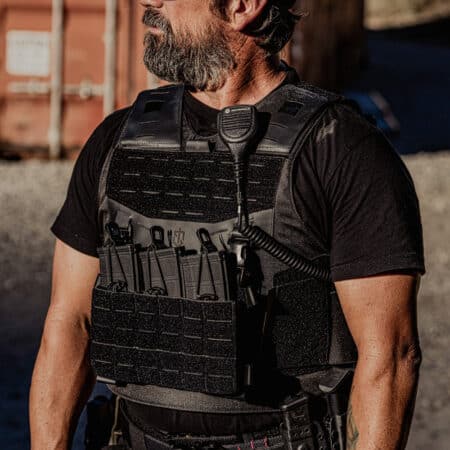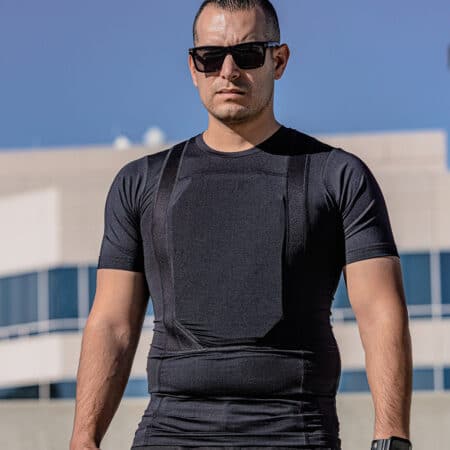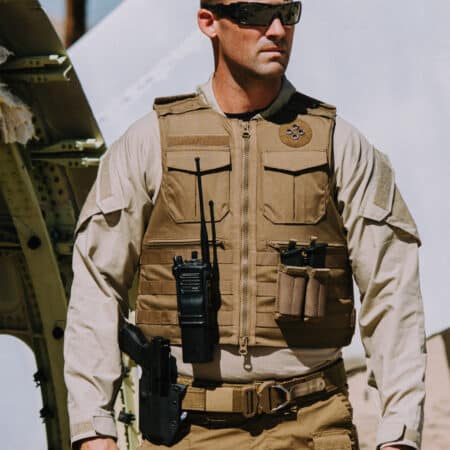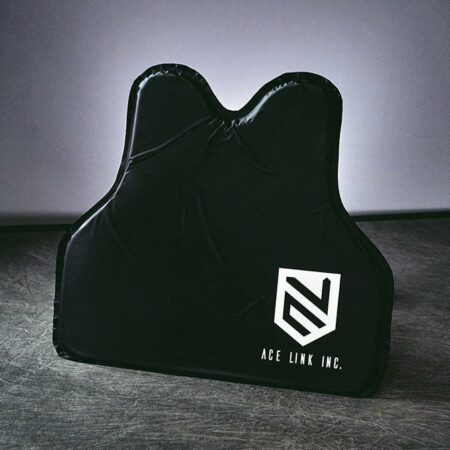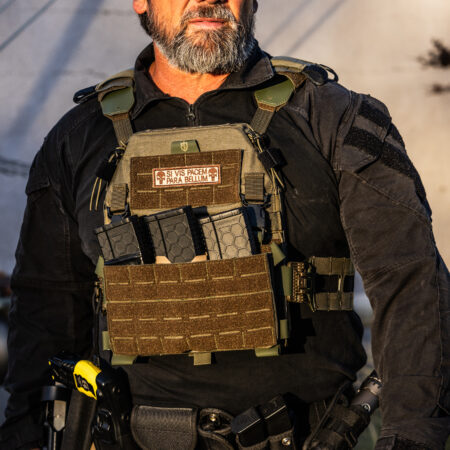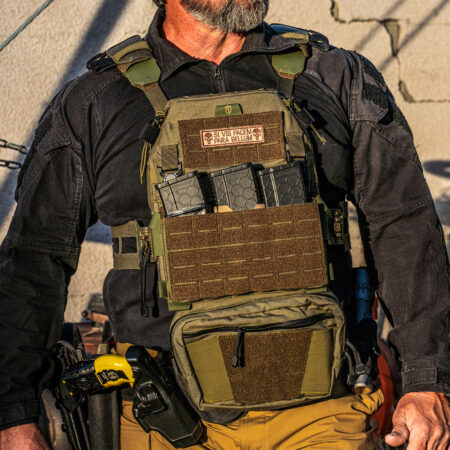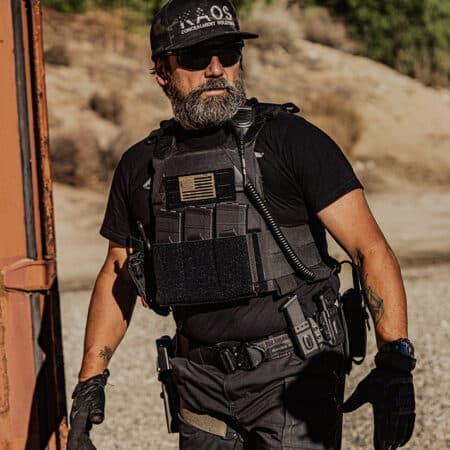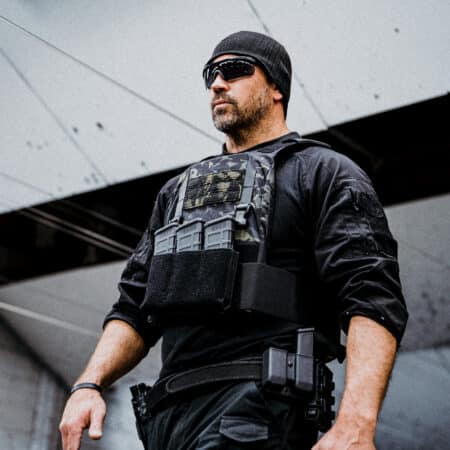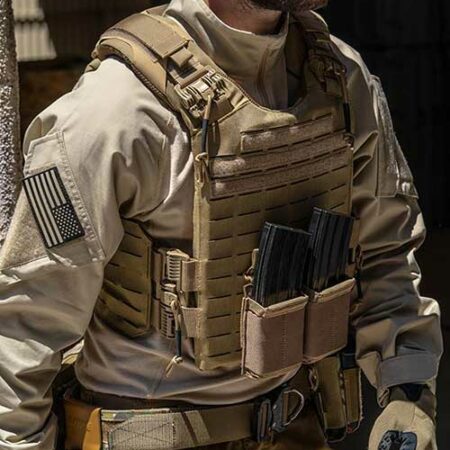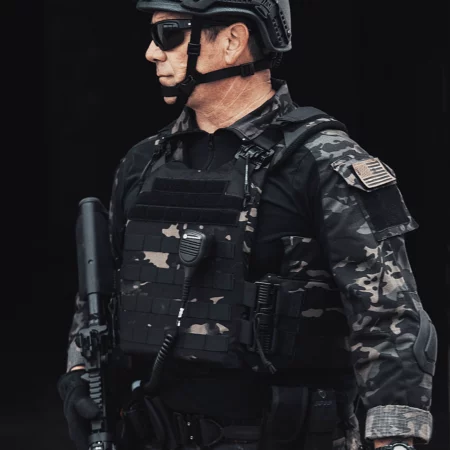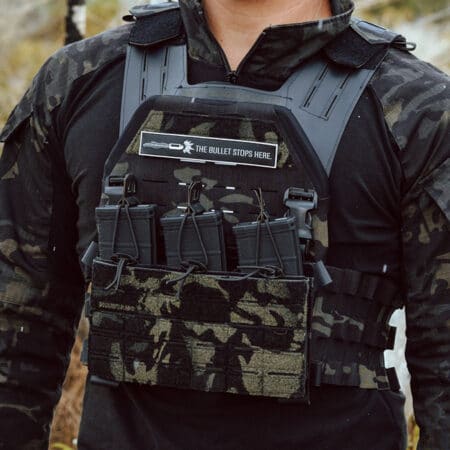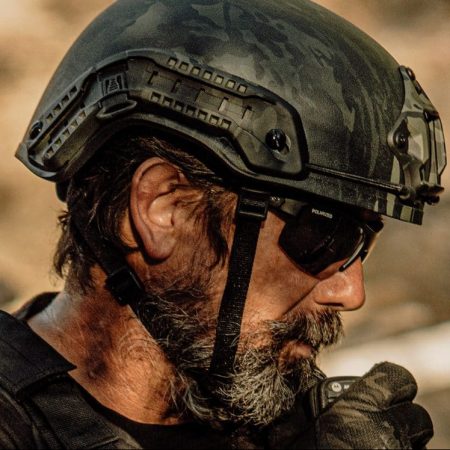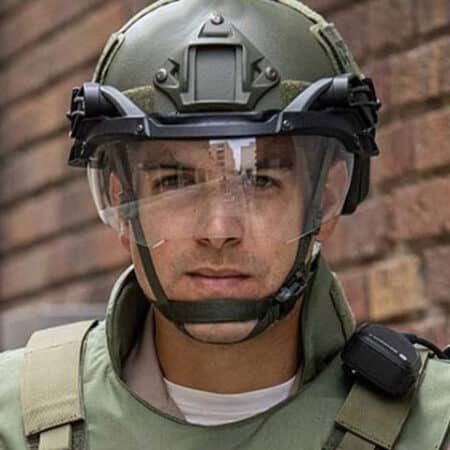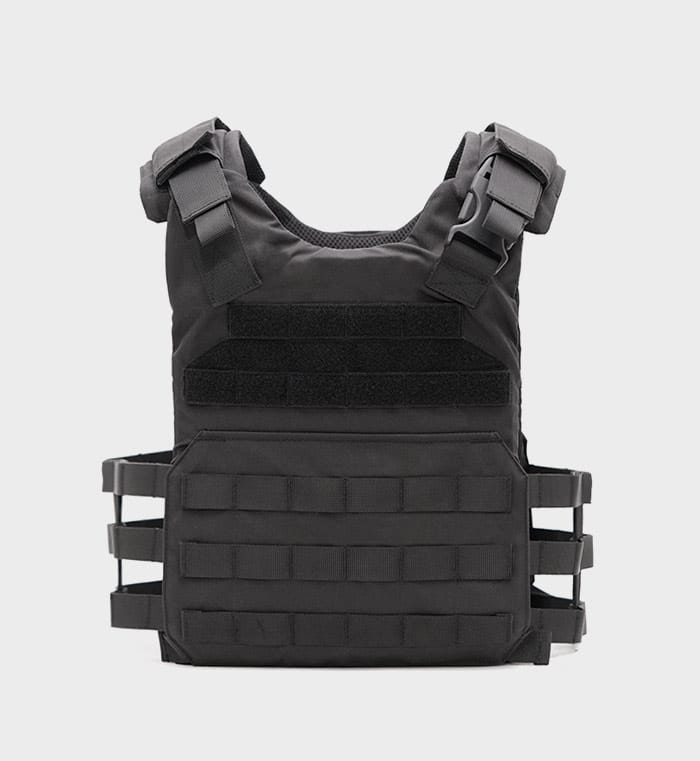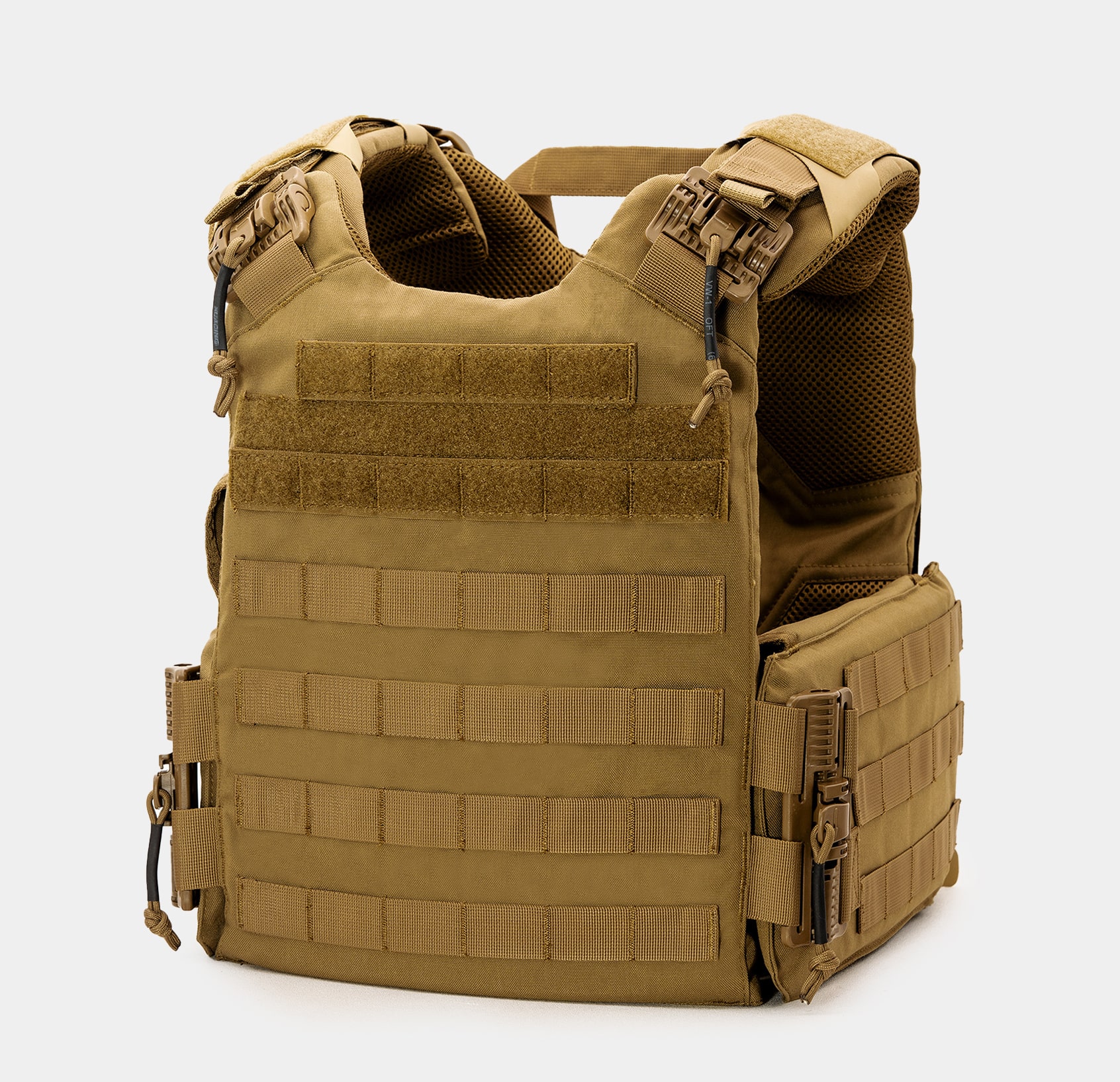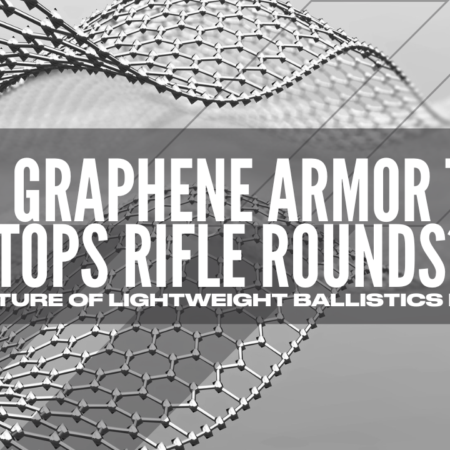The Best Types Of Body Armor For Home Defense.

Body armor is commonly used by a Police officer, military professional, or security guards, however, civilians can also buy body armor. So, today we are going to talk about the best type of body armor for home defense as it can effectively protect you against knife attacks or bullets fired from a bad-intended stranger invading your household.
Let’s get started.
WHY DO YOU NEED BODY ARMOR FOR HOME DEFENCE?
Though it is encouraging to know that over the last decade, property crime in the US has been trending down, that doesn’t mean that there is any less need for self-defense. In fact, according to the latest statistics from the FBI, a burglary happens every 22.6 seconds in the U.S and around 88% of burglaries happen in homes.
Therefore, you need to be prepared to defend your home. You can’t completely rely on a police officer to keep you safe because, by the time that they respond, it could already be too late.
This is why many people buy guns, and other gear to ensure their home safety. In fact, in 2020, over 5 million Americans purchased a firearm for the first time.
One of the most underrated parts of a home defense kit is body armor. A few years ago, if someone had asked me if they needed body armor for home defense, I would have said no, but after last year’s riots, and chaos, needing a bulletproof vest for home defense, doesn’t seem like such an unlikely situation.
According to the latest statistics from the FBI, a burglary happens every 22.6 seconds in the U.S and around 88% of burglaries happen in homes.
WHAT ARE THE DIFFERENT TYPES OF BODY ARMOR?
So, before we get into which type of body armor is best for home defense, let’s talk about the types of bullet proof vests in general. There are four basic types of body armor, these are;
BALLISTIC OR BULLETPROOF VESTS:
As it is evident from the name, these vests and armor plates are designed to offer ballistic protection. American body armor standards can be categorized into four levels, ie; Level II, Level IIIA, Level III, and Level IV.
Level II and Level III-A are soft armor, which is designed to protect you against the most common pistol rounds even at point blank range. Level II armor will stop up to a .357 magnum, whereas level IIIA armor offers a higher level of protection and is bullet proof against rounds up to a .44 magnum. This is the type of soft armor a police officer would wear under their everyday uniform.
Level III and Level IV are hard armor plates made from steel and ceramics. They are rated to offer ballistic protection against rifle rounds, and are used by special police units, military, security guards, and can be bought by civilians as well if they want. However, these can be quite heavy.
STAB ARMOR AND SPIKE PROTECTION VESTS.
Contrary to what most people may believe, bulletproof vests don’t protect you against stabs and slashes from a sharp knife, which is a common weapon used in home invasions and violent interactions.
Of course, steel plates will also stop knives, but in the case of soft armor, materials like laminate or chain mail or special treated aramid fabric may also be used to protect against stabs and slashes.
MULTI THREAT VESTS.
Multi threat vests offer both stab, spike, slash, and ballistic protection. These bullet proof vests have both Kevlar and special laminate, which makes them effective in stopping multiple threats. These vests are categorized as Dual Protection body armor or Level IIIA+ body armor and are ideal for use by Police officers and civilians in self-defense situations.
PLATE CARRIERS.
A plate carrier is a type of vest that can hold armor plates in it. The plate carrier has been used by military for a long time but now they are also available for civilian use.
There are multiple designs and styles available but all of them have the capability to accommodate soft or hard armor ballistic inserts in them. Some plate carriers have built-in magazine and radio pouches. There are many other accessories that can be added to the vest such as smoke grenade launchers or hydration systems, etc. but for home defense purposes – you don’t really need them.
WHAT TYPE OF BODY ARMOR IS BEST FOR HOME DEFENSE?
Now that we know about the different types of body armor, let’s talk about what is best for home defense.
You need something lightweight, and easy to put on under pressure, furthermore, it shouldn’t hinder your maneuverability and offer protection against bullets and in close combat situations.
Since pistols and knives are the most commonly used weapons by home invaders, I’d suggest using Level IIIA+ body armor that offers both Ballistic and Stab protection. These Soft armor vests are lightweight and can be worn easily in high-pressure situations.
They are comfortable to wear and allow maximum maneuverability so that you can clear your house, move your family to a safe room, or go through whatever home defense strategy you may have.
Level IIIA+ body armor vests will stop all the most common pistol rounds in the US, which are 9mm, .45 ACP, .40 S&W, .38 Special, and .380 ACP. These ballistic vests will also stop both birdshot, and buckshot, however, the impact trauma can be quite devastating with high-powered shotgun rounds. Such vest will stop spike and slash threats of impact energy up to 36 joules as well (that is NIJ0115.00 protection level).

TACTICAL LEVEL 3A BULLETPROOF VEST “COMP-28”
Ace Link Armor COMP-21 Bulletproof Vest provides comprehensive ballistic protection to ensure the wearer is safe when he needs it the most. NIJ.06 IIIA structure will stop multiple rounds of various handgun threats (up to .44 magnum).
The body armor is simple to wear, yet highly effective and functional – it features a lightweight material to keep the wearer comfortable and agile. At only 5.5 lbs average per vest, you will be able to do what you need without any encumbrance.
A cooling mesh that resists the growth of bacteria, mold, and mildew while keeps the wearer cool and comfortable by effective heat dissipation. Spectre bulletproof vest has been designed to provide perfect and unnoticeable protection whether worn under clothing or over top. Armor is fabricated from our proprietary bullet-resistant material – Aramid fabric renowned for its strength, lightweight, durability, and high performance.
ARE ARMOR PLATES GOOD FOR HOME DEFENSE?
You could use steel body armor plates for home defense, but there are some problems with that, firstly, though steel body armor plates offer protection against rifle rounds, they are heavy, and it is extremely rare for average burglars and home invaders to use rifles or shotguns. Also, you cannot use steel body armor plates for shields or cover as they are too heavy to be useful in this capacity. You cannot wear them for extended periods, you will get fatigued. Also, steel body armor plates can be very uncomfortable and hot in the summertime as they tend to heat up a lot.
So, the next option is Level III body armor plates. Well, they do offer protection against most common calibers; however, it is highly unlikely that a standard burglar or home invader will be shooting at you with AKs, or AR-15s. However, if you do feel like that is a threat you are going to face, ceramic or PE armor plates are the best option.
Steel armor plates tend to get a bad rep because of spalling, which is when the fragments of the bullet can be deflected into the shooter of the people around them after hitting the plate.
So, in conclusion, level IIIA+ ballistic vests are the ideal type for home defense, however, if you feel like you may be under threat from someone other than the run of the mill home invaders and robbers, who may be using rifle rounds, you should opt for level III armor plates, which will stop up to .308 win (7.62 x 51) rounds or Level 3+ Special Threat Plates or even Level IV armor plates – this is simply because they will stop various rifle rounds, however, the weight level of this armor plate will be exponentially more than other protection levels.
In order to be able to carry hard plates, you will need one of the plate carriers. There is variety of plate carriers available on the market. Depending on your specific needs you can choose budget option like Quadrelease Plate Carrier or go for a more advanced one like Skeletac Plate Carrier. Read more about setting up your plate carrier in our blog article.
HOW TO SET UP A BULLETPROOF VEST FOR HOME DEFENSE?
Another important question is how should you set up your body armor? Well, that may change depending upon your home defense strategy and your home defense weapon. However, in general, here are some things you should have on your bullet proof vest or armor plate carrier:
Extra ammunition
Knife
Flashlight
Medkit
EXTRA AMMUNITION:
Make sure that you have at least one or two extra mags for your primary self-defense weapon on your vest. Most people use shotguns as a PDW (Personal Defence Weapon), so, in that case, carry some extra shells in a pouch or a shell holder on your vest.
A KNIFE:
In real-life self-defense scenarios, it is possible to end up in a hand-to-hand combat situation, therefore, having a knife on your vest that you can reach quickly can be extremely helpful.
A FLASHLIGHT:
A flashlight is an indispensable item, that needs to be a part of your defense kit, so, make sure that you keep a quality flashlight on your vest or plate carrier. A flashlight will help you clear your home, and move around at night, without turning the lights on and alerting the burglars or home invaders.
MEDKIT:
You should also fit a small personal medkit on your vest or plate carrier. The common saying about Body armor is that it should help prevent holes, plug holes and make holes, in that order. Therefore, keeping a small medkit on you is important, as it can save your life if you get shot. Police officers and military personnel always carry a med kit with them.
Having all the necessary equipment mounted on your vest allows you to get access to it immediately when you put on your vest, and you don’t have to fumble around to find extra mags, and a flashlight.
The fit of your vest or plate carrier is also very important. You need to be able to wear your vest instantly and have it fit perfectly without having to adjust any straps. This can be achieved by trying the vest on, and using it when you practice at the range.
It is also quite important that you train with your bulletproof vest on so that you can get used to how it feels with your personal defense weapon.
STAY ALERT, STAY PREPARED:
In a home defense situation, it is good to have as many advantages as you can possibly have, therefore, getting somebody armor can make the difference between life and death. It could also improve your ability to defend your family and your property. Keeping everything in mind, we suggest that level IIIA or Level IIIA+ body armor is the best for home defense, however, you can also use a rifle armor plate if you prefer.




